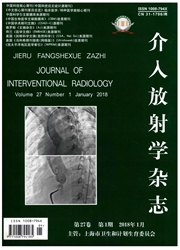

 中文摘要:
中文摘要:
目的:探讨糖尿病大鼠骨髓来源内皮祖细胞与正常大鼠在数量及生物学活性方面的差异。方法雄性SD大鼠按60 mg/kg腹腔快速注射1%STZ的枸椽酸缓冲液建立糖尿病动物模型。密度梯度法分离糖尿病大鼠和正常大鼠骨髓单个核细胞,用EGMTM-2MV BulletKitTM培养基进行诱导培养,观察细胞形态学特征,流式细胞仪检测细胞表面抗原,摄取Dil-Ac-LDL 与结合 FITC-UEA-1双荧光鉴定细胞及检测细胞比例,CCK-8、Transwell小盒等检测细胞增殖、黏附及迁移能力。结果内皮祖细胞在体外培养时呈梭形,贴壁生长,均可表达CD34、CD133和VEGFR-2,且能摄取Dil-Ac-LDL并结合FITC-UEA-1,证明所培养细胞为内皮祖细胞。糖尿病大鼠骨髓来源的内皮祖细胞数目与正常大鼠相比无明显差异,但其黏附能力明显低于正常大鼠,增殖能力、黏附及迁移能力均降低。结论与正常大鼠相比,糖尿病大鼠骨髓来源内皮祖细胞数量无明显差异,但生物学活性降低,主要表现在增殖能力、黏附及迁移能力均减弱。
 英文摘要:
英文摘要:
Objective To study the defects of bone marrow-derived endothelial progenitor cells (EPCs) in number ratio and biological abilities (proliferation, adhesion and migration) in diabetic rats. Methods (1) Establishment of diabetic rat model:1%STZ solution was quickly injected into the abdominal cavity of the male SD rats with the dose of 60 mg/kg. (2). Isolation, culture and identification of bone marrow-derived EPCs in diabetic and normal rats. Bone marrow mononuclear cells were isolated from diabetic and normal rats by density gradient centrifugation methods and cultured by EGM-2 MV medium. The cells were identified by morphological observation, FITC-UEA-1 binding and Dil-Ac-LDL uptake assay, and fluorescent immunocytochemistry was used for detection of CD34 , CD133 and VEGFR-2 expression. CCK-8 method and Transwell kit method were used to determine biological activities of EPCs. Results (1) When cultured in vitro, both bone marrow-derived EPCs in diabetic and normal rats were fusiform in shape, the cells snuggled up to the wall. The expression of CD34, CDl33, VEGFR-2 could be detected in these cells, and the cells could uptake Dil-Ac-LDL and bind FITC-UEA-1, which proved that these cells were EPCs. (2) No significant difference in the number of EPCs derived from bone marrow existed between diabetic rats and normal rats, but the proliferation ability, migration ability and adhesion ability of bone marrow-derived EPCs in diabetic rats were obviously lower than those in normal rats. Conclusion The number of bone marrow-derived EPCs in diabetic rats is not obviously different from that in normal rats, but the biologic activity of EPCs derived from bone marrow in diabetic rats is degraded, which is manifested as weakened abilities of the proliferation, adhesion and migration.
 同期刊论文项目
同期刊论文项目
 同项目期刊论文
同项目期刊论文
 期刊信息
期刊信息
